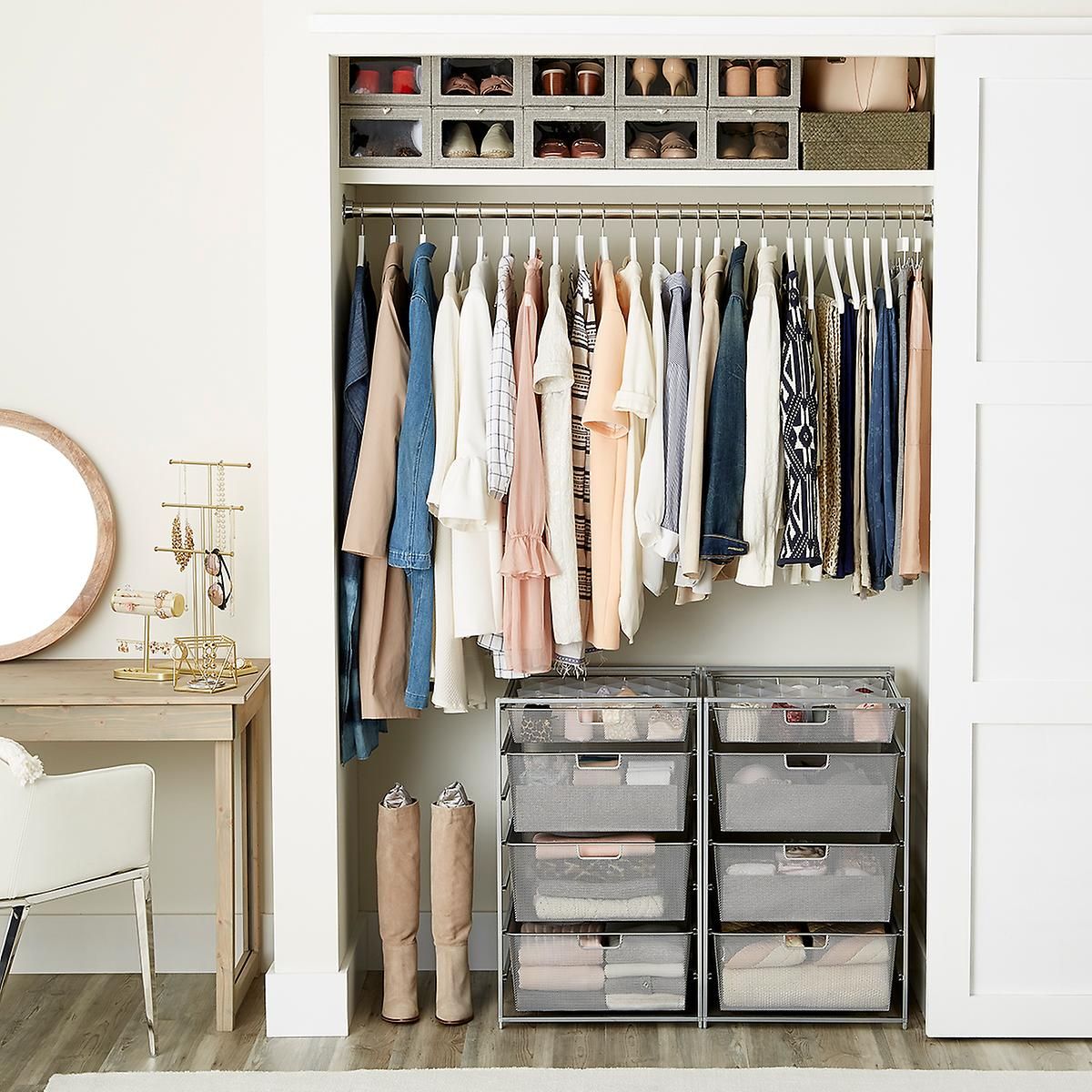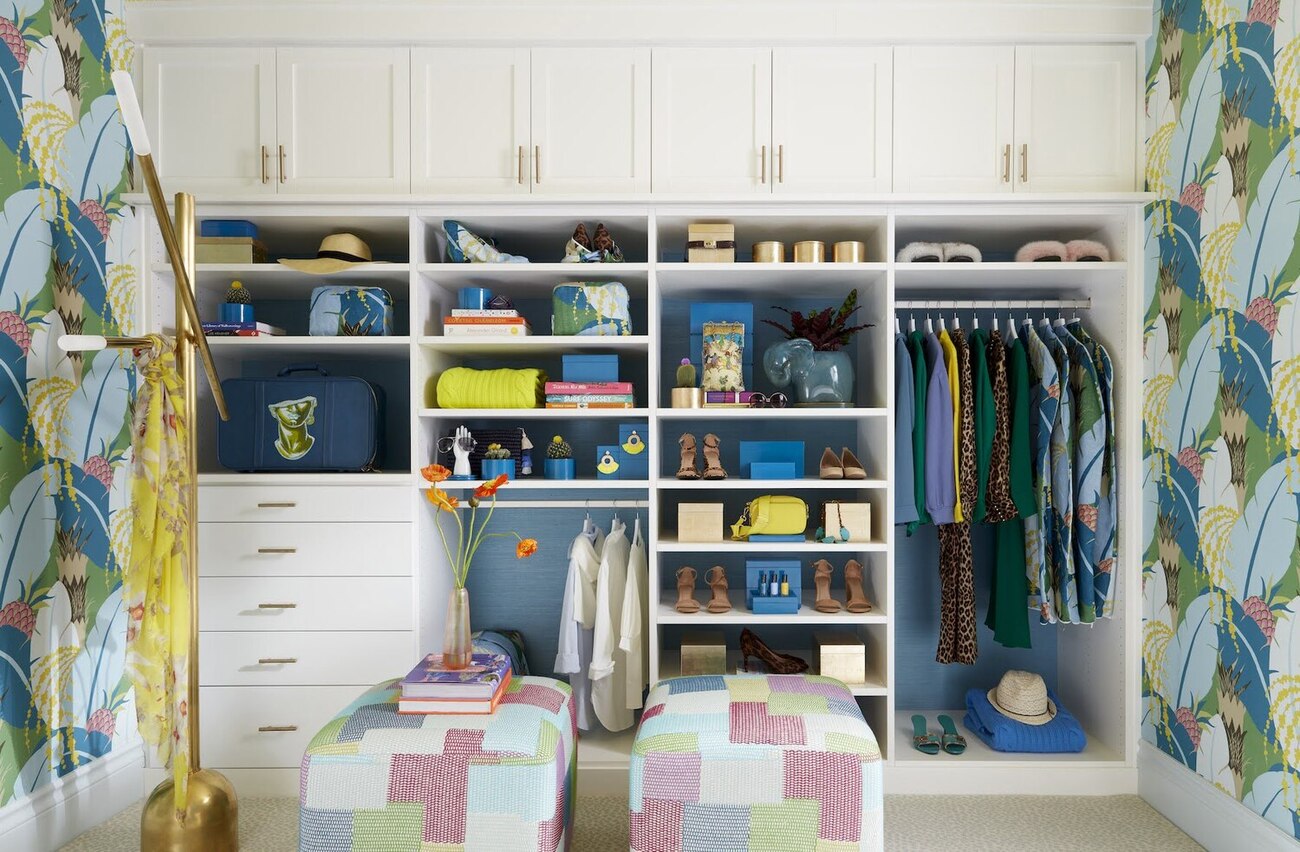Home>Storage & Organization>Closet & Wardrobe Organization>How To Organize Clothing In Closet


Closet & Wardrobe Organization
How To Organize Clothing In Closet
Published: March 2, 2024
Learn how to efficiently organize your clothing in your closet and achieve a clutter-free wardrobe with our expert tips and tricks for closet and wardrobe organization. Simplify your daily routine and maximize your closet space today!
(Many of the links in this article redirect to a specific reviewed product. Your purchase of these products through affiliate links helps to generate commission for Storables.com, at no extra cost. Learn more)
Assessing Your Clothing Inventory
Before diving into organizing your closet, it's essential to take stock of your clothing inventory. This step is crucial in determining the amount of space you need and the best way to organize your items. Start by gathering all your clothing from various storage areas, such as dressers, laundry baskets, and the floor. Lay them out in a designated area, so you can see everything at once. This will give you a clear picture of the types of clothing you have and the quantity of each item. As you assess your inventory, consider which pieces you wear frequently, those that are seasonal, and items that may no longer fit or suit your style. This initial assessment will guide you in making informed decisions as you move forward with the organization process.
Key Takeaways:
- Assess your clothing inventory to understand what you have and what you actually wear. Sorting and decluttering will help you create a closet filled with items you love and use.
- Choose the right storage solutions and organize your clothing by category to make your closet functional and easy to navigate. Maximize space with space-saving techniques for an organized and efficient storage solution.
Sorting and Decluttering
When it comes to sorting and decluttering your clothing, the key is to be ruthless yet practical. Start by sorting your clothing into three main categories: keep, donate, and discard. As you go through each item, ask yourself when was the last time you wore it, does it still fit, and does it bring you joy? If the answer is no, then it's time to part ways. Be honest with yourself and avoid holding onto items out of guilt or nostalgia.
Once you've decided what to keep, it's time to organize them further. Separate your clothing into subcategories such as tops, bottoms, dresses, outerwear, and so on. This will make it easier to see what you have and streamline the organization process. As for the items you're parting with, consider donating them to a local charity or clothing drive. Not only will this free up space in your closet, but it will also benefit those in need.
As you declutter, be mindful of any items that may require special care, such as delicate fabrics or seasonal clothing. Set these aside and consider investing in proper storage solutions to ensure their longevity. Remember, the goal of sorting and decluttering is to create a closet filled with items you love and actually wear, so don't be afraid to let go of the rest.
Choosing the Right Storage Solutions
When it comes to organizing your clothing in the closet, choosing the right storage solutions is crucial for maintaining a tidy and functional space. Here are some key storage solutions to consider:
-
Hangers: Invest in quality hangers that are suitable for different types of clothing. Velvet hangers are great for preventing clothes from slipping off, while wooden hangers provide sturdy support for heavier items like coats and suits. Slimline hangers can also help maximize space, allowing you to fit more items in your closet.
-
Shelving and Drawers: If your closet doesn't already have built-in shelves and drawers, consider adding standalone units or installing custom shelving. This provides a designated space for folded items, accessories, and shoes, keeping them organized and easily accessible.
-
Storage Boxes and Bins: Utilize storage boxes and bins to contain smaller items such as scarves, belts, and accessories. Clear containers are ideal for visibility, while decorative bins can add a touch of style to your closet.
-
Shoe Racks or Cubbies: Keep your shoe collection in check by using shoe racks or cubbies. This not only prevents shoes from cluttering the floor but also helps protect them from damage.
-
Over-the-Door Organizers: Maximize vertical space by using over-the-door organizers for items like handbags, jewelry, or small accessories. These organizers are a great way to make use of otherwise unused space.
-
Underbed Storage: If space is limited in your closet, consider utilizing underbed storage for off-season clothing or items you don't frequently use. Vacuum-sealed bags can help maximize space and protect clothing from dust and pests.
By choosing the right storage solutions, you can optimize the use of space in your closet and ensure that each item has its designated place. This not only makes it easier to find what you need but also helps maintain the organization in the long run.
Organizing by Category
Organizing your clothing by category is a highly effective way to streamline your closet and make getting dressed a breeze. By grouping similar items together, you can easily locate what you need and avoid the frustration of rummaging through a disorganized space. Here's how to organize your clothing by category:
Tops, Bottoms, and Dresses
Separate your tops, bottoms, and dresses into distinct sections within your closet. This makes it simple to assemble outfits and ensures that each category remains neatly arranged. Within each category, consider further organizing by sleeve length, color, or occasion to enhance accessibility.
Read more: How To Clean Out Closet
Seasonal Items
To maximize space and maintain a clutter-free closet, consider rotating seasonal items. Store off-season clothing in a separate area, such as underbed storage or higher shelves, to free up prime real estate for current season pieces. This approach not only keeps your closet organized but also helps you stay focused on the clothes you'll actually be wearing.
Accessories
Dedicate specific storage solutions for accessories such as scarves, belts, hats, and jewelry. Utilize hooks, hangers, or small bins to keep these items visible and easily accessible. This prevents them from getting tangled or misplaced, saving you time and frustration when accessorizing your outfits.
Special Occasion and Formal Wear
For special occasion and formal wear, consider allocating a specific section of your closet or a separate wardrobe. Use garment bags to protect delicate fabrics and invest in quality hangers to maintain the shape of these items. Keeping them separate from your everyday clothing ensures they remain in pristine condition and ready to wear when the occasion arises.
By organizing your clothing by category, you create a system that not only simplifies your daily routine but also preserves the condition of your garments. This approach allows you to appreciate and utilize your wardrobe to its fullest potential, making the most of every item you own.
Utilizing Space-Saving Techniques
When it comes to maximizing the space in your closet, employing space-saving techniques is essential for creating an organized and efficient storage solution. Here are some effective strategies to make the most of your closet space:
Double-Hang Rods
Install double-hang rods to effectively double the hanging space in your closet. This allows you to hang shorter items such as shirts and skirts above longer items like dresses and coats, making use of the vertical space more efficiently.
Cascading Hangers
Cascading hangers are a clever way to maximize vertical space and keep your closet tidy. These hangers feature multiple hanging levels, allowing you to hang several garments in the space of one standard hanger. They are particularly useful for organizing pants, jeans, or skirts.
Closet Dividers
Utilize closet dividers to create designated sections within your closet. This helps prevent clothing from becoming jumbled together and makes it easier to maintain an organized space. Dividers can be used to separate different categories of clothing or to allocate specific areas for each family member sharing the closet.
Fold-Down Hinged Hangers
Fold-down hinged hangers are a space-saving solution for items like trousers or jeans. These hangers allow you to hang multiple pairs of pants on a single hanger, and the fold-down feature makes it easy to access a specific pair without disturbing the rest.
Slimline Hangers
Opt for slimline hangers to maximize hanging space and create a uniform look in your closet. These hangers take up less space than traditional hangers, allowing you to fit more items within the same area. Their sleek design also adds a touch of elegance to your closet.
Adjustable Shelving
If your closet has adjustable shelving, take advantage of this feature to customize the space according to your storage needs. Adjusting the height of shelves allows you to accommodate items of various sizes, from folded clothing to shoe boxes and accessories.
Overhead Storage
Make use of overhead storage for items that are not frequently accessed, such as seasonal clothing, luggage, or bulky items. Installing shelves or utilizing storage bins in this space helps free up the main area of the closet for everyday essentials.
By implementing these space-saving techniques, you can transform your closet into a well-organized and functional storage space. These strategies not only maximize the use of available space but also contribute to a clutter-free and visually appealing closet environment.
Frequently Asked Questions about How To Organize Clothing In Closet
Was this page helpful?
At Storables.com, we guarantee accurate and reliable information. Our content, validated by Expert Board Contributors, is crafted following stringent Editorial Policies. We're committed to providing you with well-researched, expert-backed insights for all your informational needs.













0 thoughts on “How To Organize Clothing In Closet”